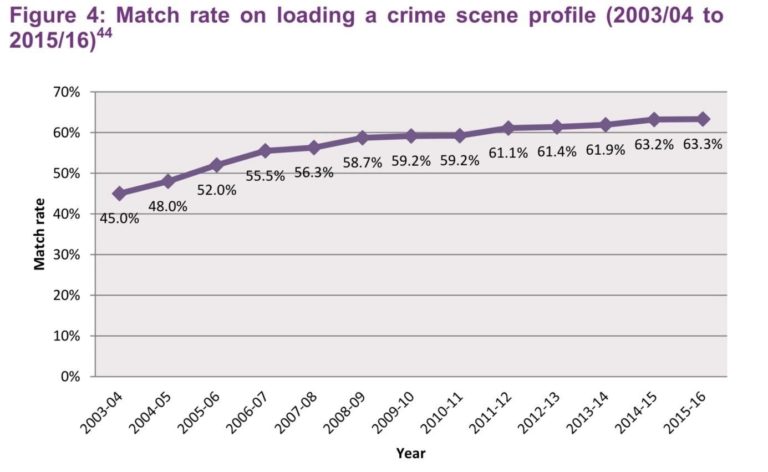
Reach your personal and professional goals
Unlock access to hundreds of expert online courses and degrees from top universities and educators to gain accredited qualifications and professional CV-building certificates.
Join over 18 million learners to launch, switch or build upon your career, all at your own pace, across a wide range of topic areas.

 Match rate on loading a crime scene profile (2003/04 to 2015/16) Along the X axis the range shows years from 2003 to 2016. On the Y axis, the Match rate rises from 0% to 70%. The points begin at 45% and then rise up along 13 points to 63.3% showing an increase in match rate across the years.
Match rate on loading a crime scene profile (2003/04 to 2015/16) Along the X axis the range shows years from 2003 to 2016. On the Y axis, the Match rate rises from 0% to 70%. The points begin at 45% and then rise up along 13 points to 63.3% showing an increase in match rate across the years.






